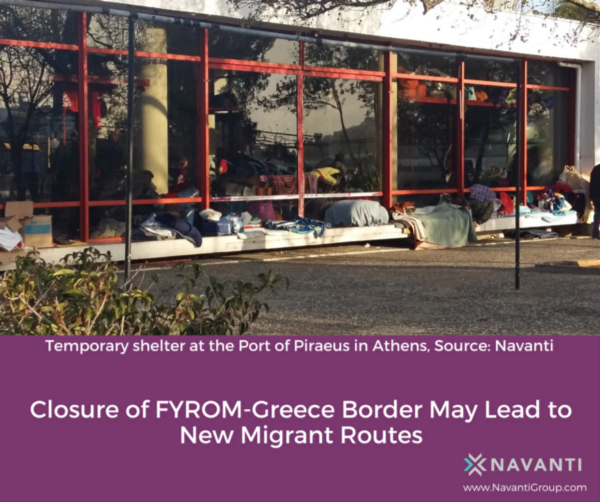
On 23 February 2016, the government of the Republic of Macedonia (FYROM) announced the closure of its border with Greece to all migrants, except refugees from Syria and Iraq (who make up 65% of all people arriving in Greece from Turkey according to the United Nations High Council on Refugees). With 12,000 migrants gathered in the refugee camp at Eidomeni, the humanitarian situation is reportedly becoming dire.
In early March, some non-Syrian/Iraqi migrants in Athens reported they were still heading to Eidiomeni despite knowing the restrictions. An Afghan woman reported:
>
“I arrived [on the Greek island of] Lesbos from Turkey two weeks ago, and I have been in Athens for three days. I know they closed the border, but I don’t know what we are going to do. We will all travel to Eidomeni when my family arrives, and we will try [to cross]. God will help us. There will be a way. I know some Afghans who went to Eidomeni but came back to Athens. Some did not. I have a child. Maybe they will help me.”
A Syrian staying in the passenger waiting area, after the refugee camp located at Athen’s Port of Piraeus became overcrowded, reported considering new routes to reach Germany:
>
“I have been [in Athens] for 5 days, but I arrived in Chios, Greece two weeks ago. They closed the borders with Macedonia, and they let only a few people pass. I will go to Eidomeni first, and I think I can pass. They let some friends of mine cross into Macedonia. If we don’t make it, I heard about Albania from other people talking here in the camp, but I do not know anyone who has traveled there. ”
Greek media reported Arabic language fliers of an unknown origin appeared among some refugees and migrants with instructions describing where to cross a tributary of the Konska River into FYROM west of Eidomeni. As FYROM continues to tighten security on its border, migrants may try to use areas around Kakavia on the Greek-Albanian border to continue to other parts of Europe. If the flow of migrants and refugees shifts westward within Greece, this may cause the humanitarian center of gravity to shift to areas of the country not yet prepared for that contingency.

